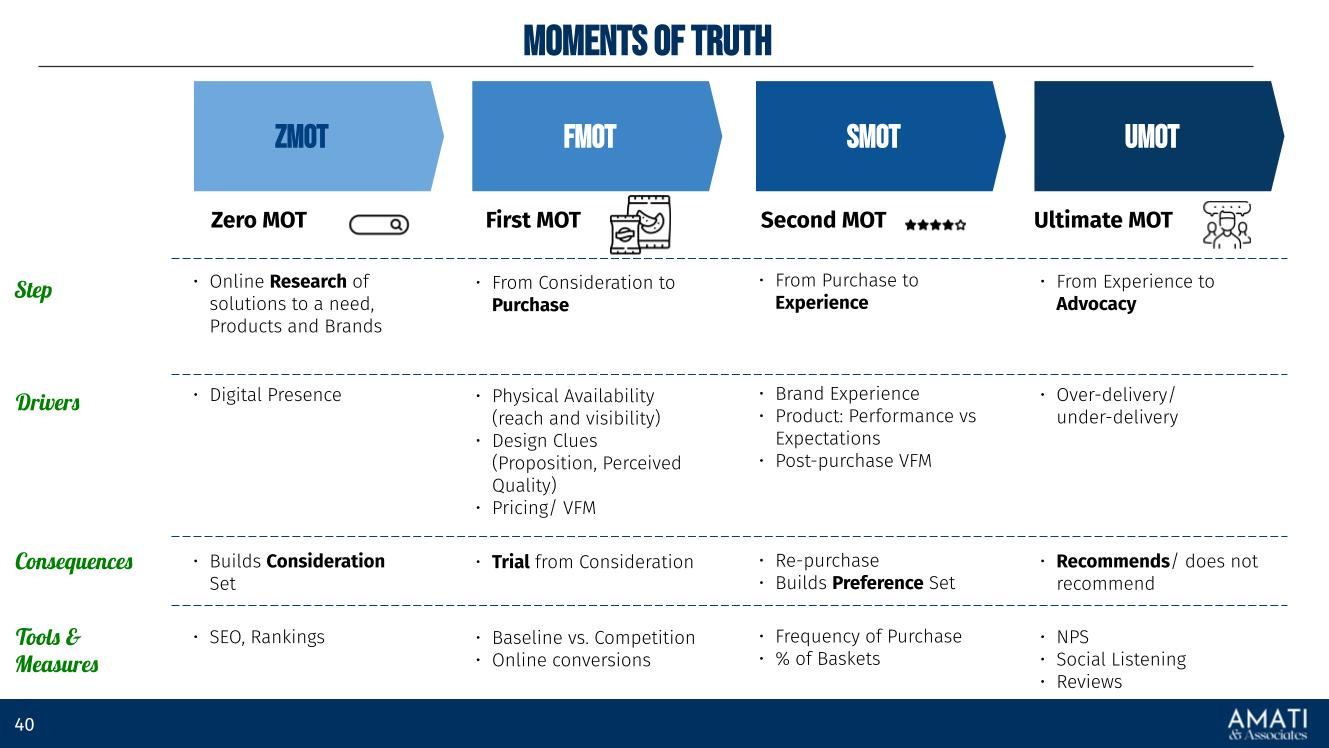Auditing the Moments of Truth
In the age of digital transformation, the way consumers interact with brands and make purchase decisions has evolved significantly. The journey from initial awareness to purchase and beyond is no longer a linear path but a complex web of interactions and impressions heavily influenced by digital touchpoints. Understanding these pivotal moments, known as the "Moments of Truth," is crucial for brands looking to navigate the modern consumer landscape successfully.
The concept of the Moments of Truth in marketing encompasses several vital stages where consumers form opinions that influence their buying decisions. These stages include the Zero Moment of Truth (ZMOT), the First Moment of Truth (FMOT), the Second Moment of Truth (SMOT), and the Ultimate Moment of Truth (UMOT).
Zero Moment of Truth (ZMOT): Coined by Google, ZMOT refers to the research phase that occurs before a consumer interacts with a product or service. During this phase, potential customers gather information from search engines, social media, online reviews, and other digital channels. The impressions formed during ZMOT are crucial as they influence whether a consumer will consider a brand or product in their decision-making process. To optimize for ZMOT, brands must ensure their robust digital presence with high-quality content that addresses consumer queries and concerns.
First Moment of Truth (FMOT): Initially introduced by Procter & Gamble, FMOT occurs when a consumer encounters a product for the first time in a store or online. This moment is critical as it's when the decision to engage further or walk away is made. The effectiveness of product presentation, packaging, and placement plays a significant role in influencing the consumer's decision. Brands can optimize FMOT by enhancing their product's visual appeal and ensuring strategic placement in physical stores and online platforms.
Second Moment of Truth (SMOT): SMOT involves the consumer's direct experience with the product or service. This stage is pivotal as it determines whether the consumer's expectations, set during ZMOT and FMOT, are met or exceeded. A positive SMOT can lead to repeat purchases and brand loyalty. Brands should focus on ensuring product quality, providing clear usage instructions, and soliciting and acting on customer feedback to ensure a positive SMOT.
Ultimate Moment of Truth (UMOT): UMOT occurs when consumers share their experiences with others, influencing future ZMOTs. This can be through reviews, social media, or word-of-mouth. Positive UMOT can amplify a brand's reach and credibility, driving new customers. To encourage UMOT, brands should engage with customers post-purchase, promote sharing positive experiences, and build a community of brand advocates.
Auditing and optimizing each Moment of Truth is essential for brands aiming to align their marketing strategies with consumer behaviors and expectations. By enhancing their online presence for ZMOT, improving product presentation for FMOT, ensuring product quality for SMOT, and encouraging positive advocacy for UMOT, brands can foster a deeper connection with their audience, driving loyalty and sustainable growth.
The consumer journey is no longer a straightforward path but a series of Moments of Truth that influence decision-making. By focusing on these moments, brands can make meaningful connections, deliver value, and build a lasting legacy in the hearts and minds of their customers. In an increasingly competitive market, those who adapt their strategies to meet and exceed the needs of the digital-savvy consumer will set themselves up for continued success and growth.






